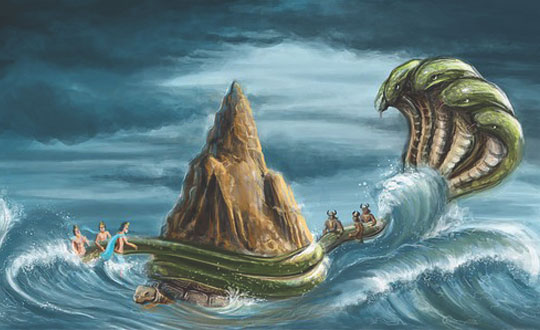We have grown up learning that Hinduism is a religion and that it is one of the many religions that are prevalent in the world. Famous writers like M. Thomas Babington Macaulay, Karl Marx and many authors of NCERT books have shown a clear bias in their writing towards diluting the Vedic culture and equating to another religion amongst so many other religions. Some issues back, we had seen the omnipresence of the dhwani, ‘ram’ across cultures; in this issue of TI W I give you some more facts…
We all know of beings called asurs and devtas as described in the Vedas and that together they churned the celestial ocean for obtaining amrit or the divine nectar. Interestingly, Avesta, the text of one of the oldest religions prevalent in Iran (dating around 3000 BC) mentions a certain Ahura Mazda as the name for a higher divinity, who was later proclaimed as the uncreated God by Zoroaster, the founder of Zoroastrianism. Ashur (also, Assur, Aššur) is an East Semitic God and the head of the Assyrian Pantheon in Mesopotamian religion, worshipped mainly in the northern half of Mesopotamia, and parts of northeast Syria and southeast Asia Minor which constituted old Assyria. In fact the capital city of the Assyrian empire was called Assur (dating 3rd millennium BC) and from it the name Assyrian cropped up.
Daeva (daēuua, daāua, daēva) in Avestan language meaning ‘a being of shining light’, is a term for a particular sort of supernatural entity as per Iranian culture. Its equivalents in modern Iranian languages: dêw (Pashto, Baluchi, Kurdish), dīv (Persian), devi (Georgian), deo (Urdu).
As Ram is a universal phenomenon and the name used all over the world in different ways, similarly another combination of words asurs and devas are also common.





